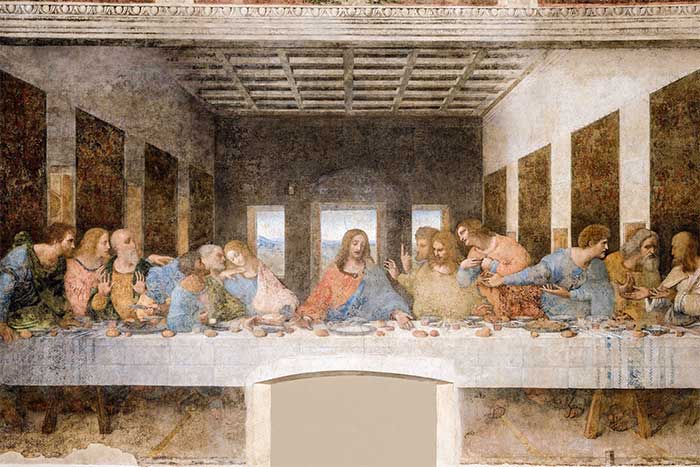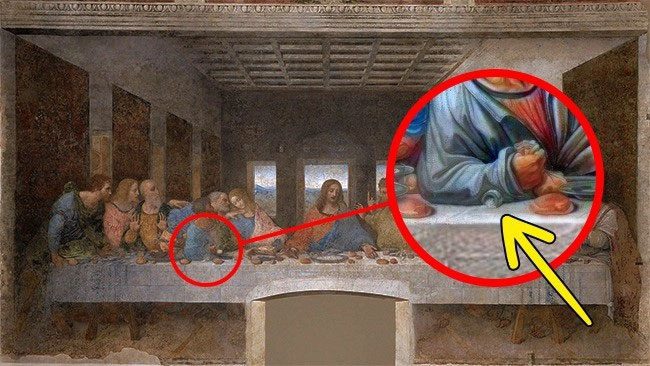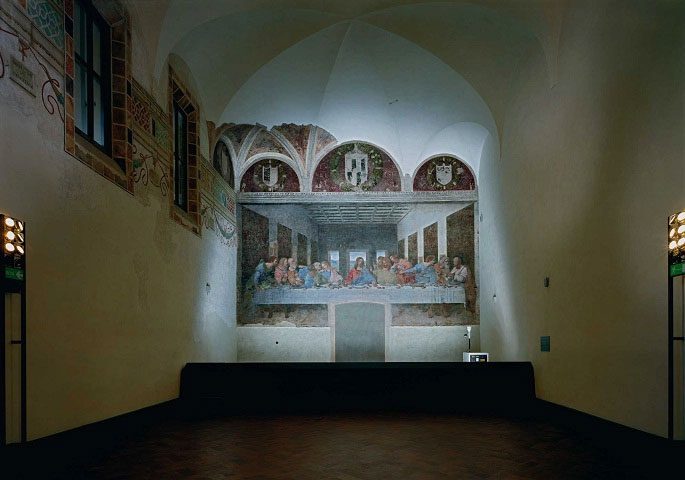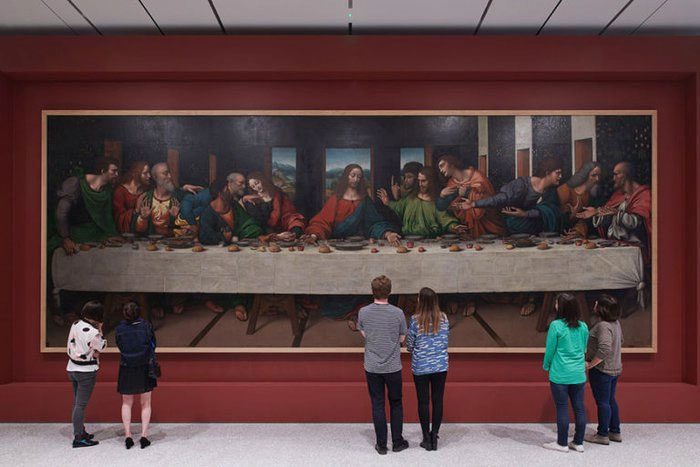To this day, the painting “The Last Supper” remains one of the most recognized and beloved works of art in history.
Facts Behind the Painting “The Last Supper”
Besides the Mona Lisa, The Last Supper is also one of Leonardo da Vinci’s most iconic works. With its harmonious composition, complex themes, mysteries, and intense emotional expressions, it’s no surprise that people from all around the world flock to the beautiful Santa Maria delle Grazie monastery in Milan, Italy, to admire this treasure.
Created between 1495 and 1498, this artwork has always been a topic of great interest since its completion. Depicting the last meal of Jesus Christ with his disciples before his departure, the painting also harbors many lesser-known truths.

The original painting by Leonardo da Vinci
1. The Disciples of Jesus Christ
Many people mistakenly believe that the figure sitting to the immediate left of Jesus is a woman with long hair and fair skin; in reality, it is Saint John. Experts speculate that da Vinci may have given this figure a more feminine and youthful appearance based on Renaissance societal ideas.

Did Jesus and Judas pose for the same model?
Another little-known secret in the painting is that both Jesus and the traitor Judas were modeled by the same person. Specifically, according to folklore, a member of the church choir was chosen by da Vinci to model for Jesus Christ.
However, as the painting neared completion, da Vinci realized he had yet to find a model for Judas and decided to ask a drunken man he found on the street. Surprisingly, after the painting was finished, this man confessed that he had modeled for Jesus three years earlier.
2. The Telling Details

The spilled salt near Judas signifies trouble
Another detail that often goes unnoticed is the image of a salt shaker spilled next to Judas. Philosophers suggest that this is a reference to upcoming troubles and ill omens, specifically the betrayal of Jesus by one of his disciples.
3. This Masterpiece Has Been Repainted, Forged, and Almost Destroyed Countless Times.
To complete this timeless masterpiece, the Italian master is believed to have repainted it numerous times. Historical wars have also significantly damaged the painting. In 1652, the Santa Maria delle Grazie monastery decided to cut a doorway through the wall where the painting hangs, necessitating the removal of some details, including the feet of Jesus.
4. The Location of the Painting Was Once Used as a Stable.
Throughout various wars, “The Last Supper” suffered even greater damage when Napoleon and his army transformed the monastery into a stable during his invasion of Milan in the 18th century.

Santa Maria delle Grazie was once repurposed as a stable
5. The First Three Copies of “The Last Supper”
Many experts believe that there are up to three copies of “The Last Supper” painted by assistants of Leonardo da Vinci. One of these copies was created by Giampietrino, the same person who guided the restoration of the original painting, and is currently housed at the Royal Academy of Arts in London. The other two copies were painted by Andrea Solari and Cesare da Sesto. These versions of “The Last Supper” are located at the Leonardo da Vinci Museum in Belgium and the Church of Saint Ambrose in Switzerland.

Copy of “The Last Supper” located at the Royal Academy of Arts in London


















































